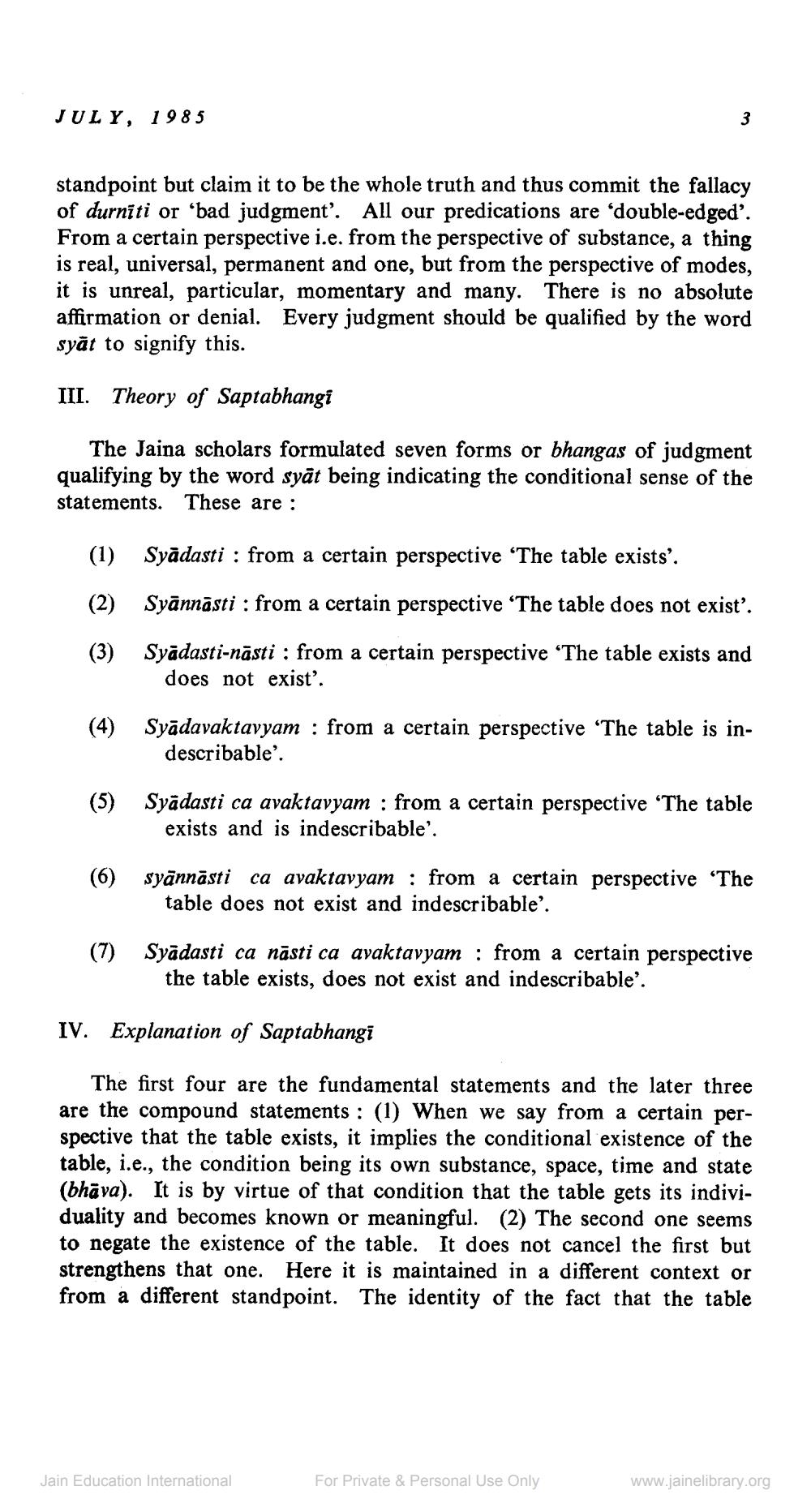Book Title: Jain Journal 1985 07 Author(s): Jain Bhawan Publication Publisher: Jain Bhawan Publication View full book textPage 8
________________ JULY, 1985 standpoint but claim it to be the whole truth and thus commit the fallacy of durniti or 'bad judgment'. All our predications are 'double-edged'. From a certain perspective i.e. from the perspective of substance, a thing is real, universal, permanent and one, but from the perspective of modes, it is unreal, particular, momentary and many. There is no absolute affirmation or denial. Every judgment should be qualified by the word syat to signify this. III. Theory of Saptabhangi The Jaina scholars formulated seven forms or bhangas of judgment qualifying by the word syat being indicating the conditional sense of the statements. These are: 3 (1) Syādasti: from a certain perspective "The table exists'. (2) Syānnāsti : from a certain perspective 'The table does not exist'. (3) Syādasti-nāsti : from a certain perspective "The table exists and does not exist'. (4) Syadavaktavyam: from a certain perspective 'The table is indescribable'. (5) Syādasti ca avaktavyam : from a certain perspective 'The table exists and is indescribable'. (6) syānnāsti ca avaktavyam: from a certain perspective 'The table does not exist and indescribable'. (7) Syādasti ca nāsti ca avaktavyam from a certain perspective the table exists, does not exist and indescribable'. IV. Explanation of Saptabhangi The first four are the fundamental statements and the later three are the compound statements: (1) When we say from a certain perspective that the table exists, it implies the conditional existence of the table, i.e., the condition being its own substance, space, time and state (bhava). It is by virtue of that condition that the table gets its individuality and becomes known or meaningful. (2) The second one seems to negate the existence of the table. It does not cancel the first but strengthens that one. Here it is maintained in a different context or from a different standpoint. The identity of the fact that the table Jain Education International For Private & Personal Use Only www.jainelibrary.orgPage Navigation
1 ... 6 7 8 9 10 11 12 13 14 15 16 17 18 19 20 21 22 23 24 25 26 27 28 29 30 31 32 33 34 35 36
